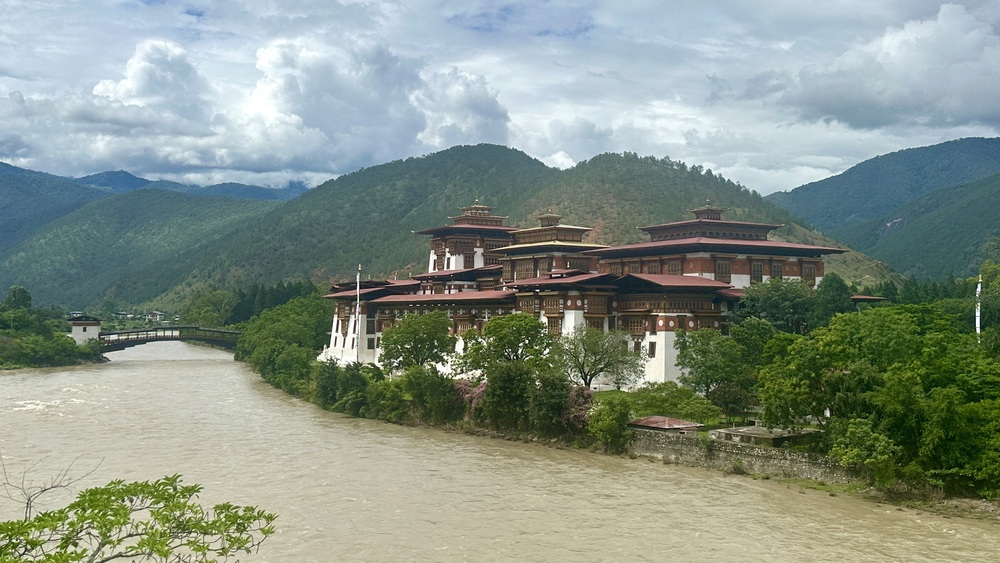For a kingdom that sells itself to the world as the last Himalayan paradise, a bastion of peace and Gross National Happiness, Bhutan harbours a brutal and little discussed ethnic cleansing that has cast a long shadow over its modern history. The stateless refugees of Bhutan mostly Lhotshampa, Nepali speaking people native to the southern plains were systematically stripped of their citizenship, expelled, and abandoned to statelessness.
Their story is one of fear, paranoia, and political engineering that began in the 1970s and continues to haunt the region today.
The Seeds of Fear: Bhutan and the Nepali Population
By the mid 20th century, Bhutan’s southern lowlands were home to a significant population of Lhotshampa, Nepali speaking settlers who had migrated generations before to farm the fertile lands. Initially welcomed for their agricultural skills and economic contribution, they gradually became a sizeable ethnic minority within Bhutan, one that challenged the dominance of the Drukpa Buddhist elite of the north.
This uneasy coexistence deteriorated rapidly after India annexed Sikkim in 1975. The Bhutanese monarchy watched with alarm a Sikkim, a Himalayan kingdom with its own ethnic diversity, was absorbed into India, effectively erasing its sovereignty. Fearing a similar fate and worried about the loyalty of their Nepali minority who had linguistic, cultural, and familial ties to India and Nepal Bhutan’s rulers grew increasingly suspicious. This paranoia hardened into a policy aimed at consolidating ethnic and religious homogeneity.
The Citizenship Act of 1985 and Ethnic Cleansing
In 1985, Bhutan introduced the Citizenship Act, which sharply tightened the requirements for citizenship, effectively disenfranchising thousands of Lhotshampa. Many who had lived in Bhutan for generations were declared illegal immigrants overnight, their papers revoked or never recognised. The government launched a “One Nation, One People” campaign, enforcing the Driglam Namzha, a code prescribing the dress, language, and customs of the Drukpa elite as a way to erase Lhotshampa cultural identity, as well as their religious freedom.
The crackdown intensified through the late 1980s. In 1988, a national census was conducted with the explicit goal of identifying “non nationals.” Those failing to meet stringent criteria often vague and inconsistently applied were branded “illegal immigrants.” The result was the mass eviction of tens of thousands, their homes seized or destroyed, their livelihoods obliterated.
This was and is the purest form of racism from one ethno-religious group to another.
Expulsions and the Refugee Crisis
Between the late 1980s and early 1990s, an estimated 100,000 Lhotshampa fled or were forced out of Bhutan. Most ended up in squalid refugee camps in eastern Nepal, where they lived for decades in limbo. The international community, slow to respond, eventually stepped in. Resettlement programs scattered refugees primarily across Western countries like the United States, Canada, Australia, and parts of Europe.
Allegations of gross human rights abuses piled up. Reports detailed arbitrary arrests, torture, forced labour, and suppression of language and religion in Bhutan. Despite these accusations, Bhutan maintained a veneer of tranquility and cultural pride, with the West almost completely swallowing the narrative of a peaceful Buddhist kingdom, while simultaneously ignoring the plight off the Lhotshampa
The Continuing Struggle and Statelessness
The crisis did not end with expulsion. Even today, estimates suggest as many as 80,000 stateless or “undocumented” Nepali origin people remain inside Bhutan, while about 10,000 still languish in Nepalese camps.
Many refuse to give up claims to land and property they have occupied longer than the Bhutanese monarchy itself has existed. The government’s stance remains hardline, and restrictions on language, dress, and religion continue to enforce the marginalisation of Lhotshampa identity.
The Rise and Fall of the Bhutan Communist Party
Amid the chaos, a small but vocal Bhutan Communist Party BCP emerged, reportedly supported by Nepalese communist factions. The BCP sought to ignite a Maoist style people’s war to overthrow the monarchy and establish a socialist state. Its armed wing, the Bhutan Tiger Force, conducted limited guerrilla operations, but it never gained widespread popular support. Its numbers peaked at a few thousand fighters, a marginal force overshadowed by larger conflicts in Nepal and India.
Today, the BCP and its militias operate in the shadows, almost forgotten in the international discourse. Yet their existence highlights the simmering unrest that persists beneath Bhutan’s polished image.
A Tragic Parallel: Bhutan and the Rohingya
The plight of Bhutan’s stateless Nepali population bears a chilling resemblance to the Rohingya crisis in Myanmar. Both are ethnic minorities targeted by supposedly peaceful Buddhist majority nations, made stateless and subjected to systemic violence. Yet while the Rohingya tragedy commands global headlines, Bhutan’s ethnic cleansing remains largely ignored.
Fetishisation of Bhutan’s Image
Bhutan has expertly curated its international image as the happiest place on Earth—a spiritual utopia untouched by the chaos around it. It ranks 95th in the United Nations’ World Happiness Report , a fact conveniently omitted in promotional materials. This façade has helped obscure the ongoing destruction of close to 200,000 people’s lives over ethnic and religious zealotry.
The international community’s failure to fully confront Bhutan’s past and present abuses amounts to complicity. Behind the tranquil mountains, the stories of stateless refugees remind us that even the most idyllic places can harbour the darkest secrets.

